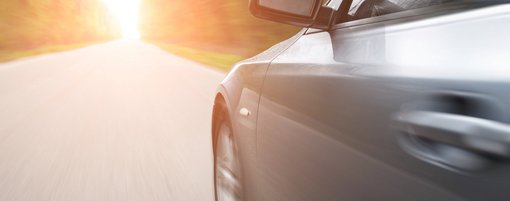Regular checks - from tyre pressure to general inspection
Since owners and drivers are responsible for the road safety of a vehicle, you must always check the vehicle yourself. What these are, we have compiled for you in the following. In addition, the main inspection is prescribed at TÜV, DEKRA, in recognised workshops or by expert organisations at fixed intervals.

This needs to be checked
Check coolant
The cooler must always contain sufficient water. You can check this at the markings in the expansion tank. Add antifreeze to the water to prevent the cooling system from freezing - after all, you use your car at temperatures below freezing. The additive also protects against corrosion in the engine block.
Check engine oil
If the oil indicator lights up, stop the engine immediately and top up with oil. When refilling, pay attention to the correct quantity, because too much oil is just as harmful as too little.
Check the air filter
To ensure a proper combustion process, the engine sucks in air that is filtered by the air filter. A contaminated or clogged air filter leads to increased fuel consumption. Therefore, an inspection of the air filter is an important part of the inspection of your car.
Check tyres
A new car tyre (summer tyre) has approx. 6-8 mm tread depth. On some tires, the abbreviation "TWI" is embossed several times on the tire side. At the level of the abbreviation, the profile does not go fully into the depth. In the case of a profile worn down to the legally permissible 1.6 mm, these points are clearly visible on the surface and the wear limit has been reached. But you better not let it get that far: The adhesion already decreases significantly under approx. 3 mm - especially in wet conditions.
Check tyre pressure
Too little air increases rolling resistance, too much air limits suspension comfort. Only when the air pressure is correct does a vehicle have optimum driving characteristics, low fuel consumption and the lowest tyre wear. You can find information about the correct air pressure in the operating instructions. You will find a table with the optimum values in the fuel filler cap or on the doors. Check the air pressure on the "cold" tyre and adjust it to the load condition.
Check windscreen wash water
Always make sure you have enough windshield wiper fluid. It's the only way you'll always have a clear view. In winter you must add an antifreeze so that the windscreen wiper does not freeze. Here you can either use ready-mixed wiping liquid or mix it yourself.
Check HU badge
The entry in the registration certificate Part I (vehicle registration document) and the test sticker on the rear registration plate tell you when the next main inspection is due. In the course of this investigation, the exhaust emission values of your car will also be checked.
On the inspection sticker, the inner circle indicates the year, the vertical number above the year indicates the month. The black marking is only a reading aid. The specified date must also be observed for vehicles that are temporarily parked (e.g. caravans).
New vehicles (passenger cars, trailers up to 750 kg zG or without own brake and motorhomes up to 3.5 t zG) must be brought to the HU for the first time after 3 years.
Every 2 years to the HU must be passenger cars, motorcycles, trucks and tractors up to 3.5 t zG or 40 km/h bbH, trailers (up to 3.5 t zG), motor homes (up to 3.5 t zG as well as over 3.5 t zG and up to 7.5 t zG in the first 6 years).
Every year, trucks, trailers and motorhomes over 3.5 t zG must undergo a general inspection.

Find your driving school
Even more tips about driving a car and you will of course get your vehicle first hand at your driving school. You haven't decided on one yet? Then have a look at our search and discover driving schools near you.